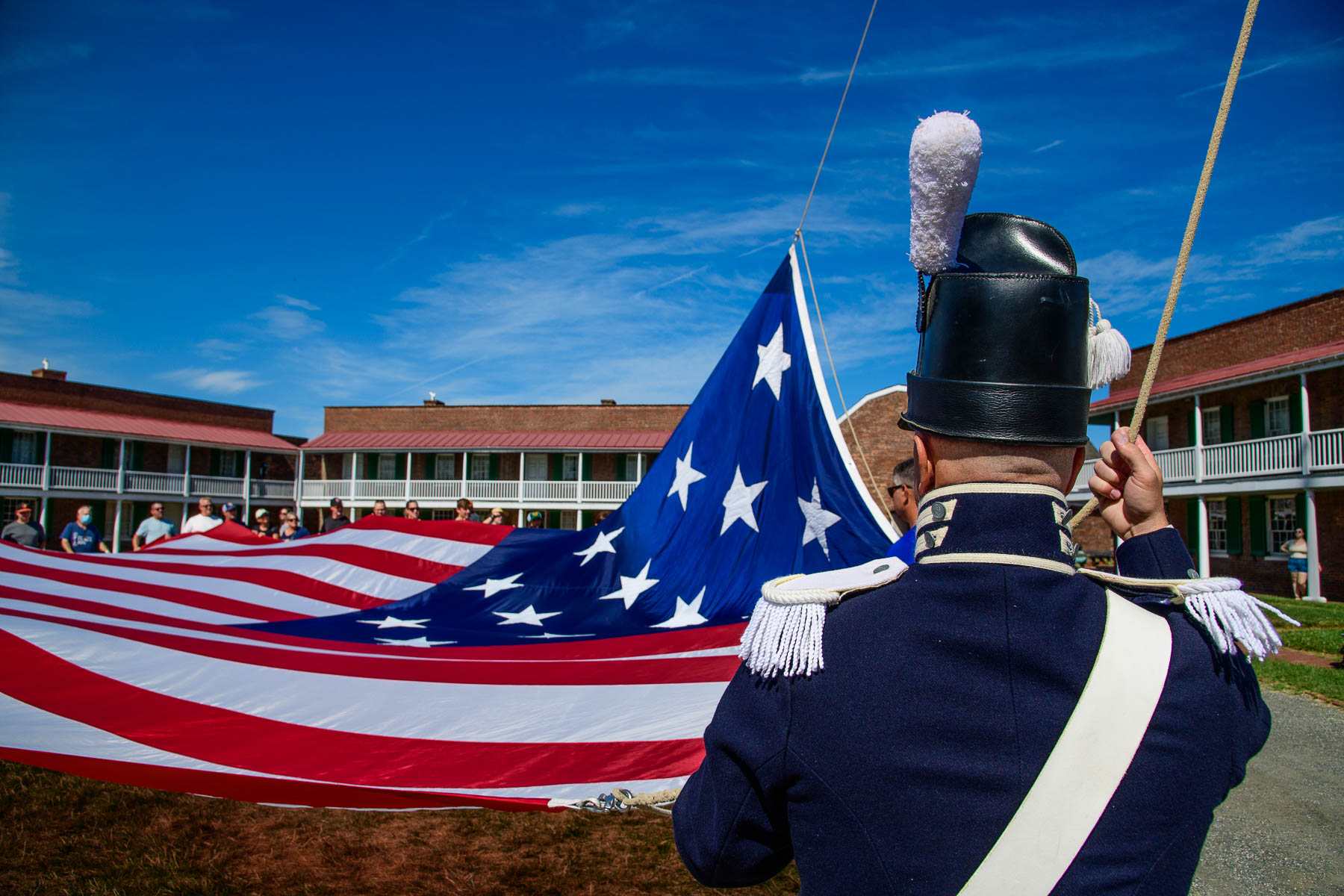Star-Spangled Banner National Historic Trail
The Star-Spangled Banner National Historic Trail is a collection of sites impacted by the War of 1812. These local, historic sites tell the story of the Chesapeake Campaign, culminating in the writing of our National Anthem. In addition to their historic significance, many of the sites along the trail are fantastic places to go for a walk, explore the outdoors, and access local waterways.
Map showing location of park.

Celebrate Flag Day at the Home of the Star-Spangled Banner
Learn how you can celebrate Flag Day by exploring the history of the Star-Spangled Banner throughout Baltimore.

Fort McHenry Celebrates its 100th Anniversary as a National Park
On March 1–2, Fort McHenry National Monument and Historic Shrine will celebrate its 100th anniversary as a national park with special ranger programs, living history, and the debut of new 100th anniversary museum exhibit “Fort McHenry: The Early Years” which highlights how Fort McHenry became part of the National Park Service and its history from 1925 to 1939. In the late 19th century, as the strategic value of the fort waned, its historical significance as the original “home of the brave” inspired the public to take action. On March 3, 1925, Congress designated Fort McHenry as “a national park and perpetual memorial shrine as the birthplace of the ‘Star-Spangled Banner’.” Join us this weekend to explore many generations of service at Fort McHenry from the Early Republic to World War II, and enjoy Baltimore’s hometown national park.
Photo by Pride of Baltimore, Inc.
Photo by Frank Greenwell
Photo by NPS/ T. Adams
Photo by Sultana Education Foundation/Chris Cerino
Photo by Office of the Governor/Jay Baker